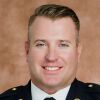“It will never happen here. We are just a small volunteer department; those big events never happen to us.”
That’s the flawed thinking of some volunteer department leaders and members.
For some, the term “mass casualty” seems like one of those unrealistic, one-in-a-million calls. The truth is our limited resources and staffing put us at a significant likelihood of facing an MCI. After all, fewer than five victims could overwhelm our local system.
It doesn’t matter if you are part of a volunteer or combination department in an urban or rural setting. What matters is that you conduct mass-casualty training on a regular basis.
How to build an MCI training event
Following are simple steps for developing an MCI drill:
- Conduct a threat assessment: Your local emergency manager can provide a risk assessment and/or the emergency response plan for your county that highlights risks such as weather, active shooter, hazardous materials, industrial risk, etc.
- Involve other agencies: Whatever incident type you choose for your drill, I strongly suggest that you make it multi-disciplinary so that more than just fire and EMS agencies can participate. Identify all the response agencies that would be leaned on during this type of event. Don’t lose sight of the nontraditional partners like the school district, public transportation, public works, and local coroner.
- Go beyond tabletops: Your local emergency manager may have conducted a risk assessment and conducted tabletop exercises for specific incident types. Tabletop exercises are great, but for most volunteer organizations, a true in-context physical exercise is more engaging and valuable.
- Identify the strategic-, tactical- and task-focused layers: When looking at the three layers of the event (strategic, tactical and task), remember this is not a test; it’s an exercise. We want all participants to feel accomplished after the event. Some tips: Prepare your members and response partners by offering specific training prior to the event. Consider conducting START triage training a month in advance or conduct refresher training on extrication or even incident command. The more prepared your crews and response partners are, the better the event will go.
- Create a design team for the drill: FEMA has great exercise design templates available to download. When building your design team, include members from all disciplines. Your design should focus on building a realistic incident that is manageable for your local response agencies. Through your design process be creative to create a realistic event. Utilizing the local drama club or high school theater department can help with makeup and injury reconstruction. Contact your local scout programs to provide some possible victim-actors.
- Make it a day: On the day of the event, make it special. Host food for crews helping as victims. Create a collaborative environment for everyone, and focus on providing service and building relationships with agencies that you don’t get much opportunity to interact.
- Review the event: Conduct a tailboard review post-exercise. After one week, complete a formal review process seeking input from each participating organization.
MCI training benefits
There are many benefits to conducting local in-context mass-casualty training. The greatest benefit is the relationships that you build with the other agencies.
For the rural volunteer department, events like can involve the entire community. Take advantage of that fact and allow – and encourage – community members to participate as volunteers. And for the urban volunteer departments, MCI events allow you to demonstrate your organization’s skills and build bridges with other agencies.
The keys to a successful event: Be prepared, conduct training prior to the event, be nice, and provide excellent customer service as the host agency.
This article, originally published on March 22, 2022, has been updated.




